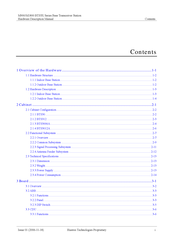User Manuals: Huawei BTS3 Series Transceiver Station
Manuals and User Guides for Huawei BTS3 Series Transceiver Station. We have 1 Huawei BTS3 Series Transceiver Station manual available for free PDF download: Hardware Description Manual
Huawei BTS3 Series Hardware Description Manual (111 pages)
M900/M1800 Base Transceiver Station
Brand: Huawei
|
Category: Transceiver
|
Size: 0.79 MB
Table of Contents
Advertisement
Advertisement
